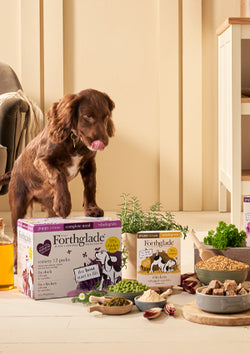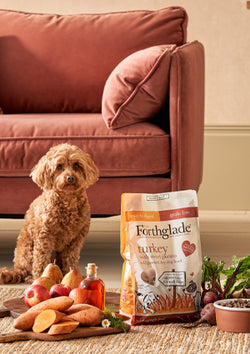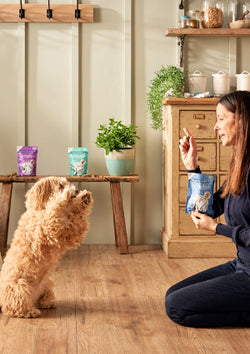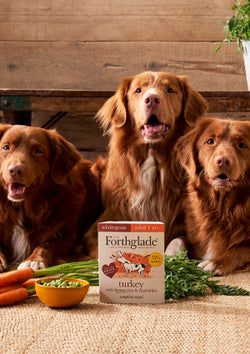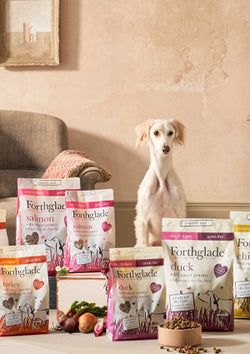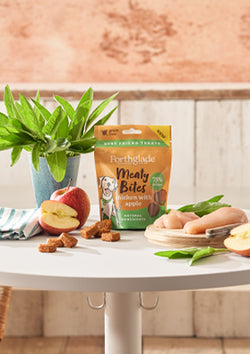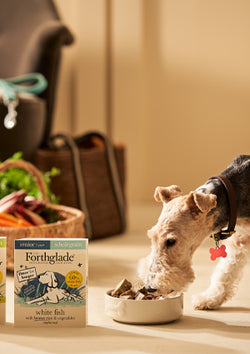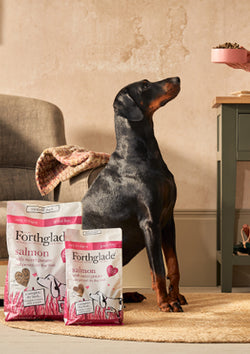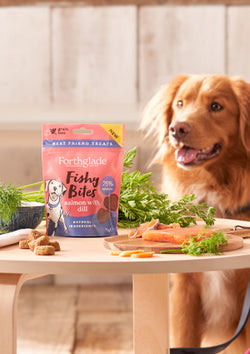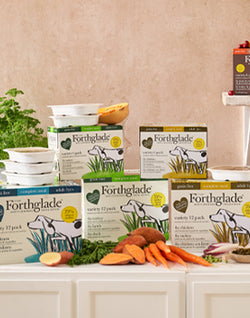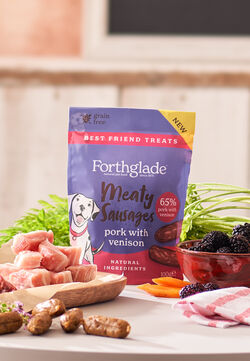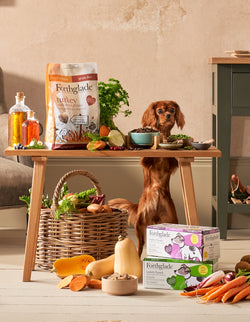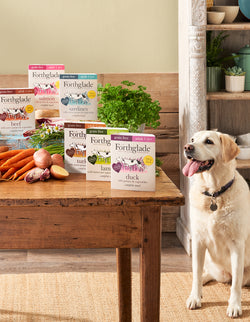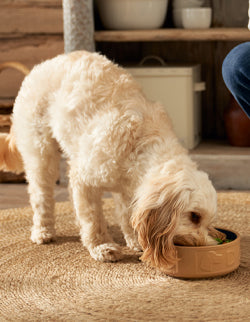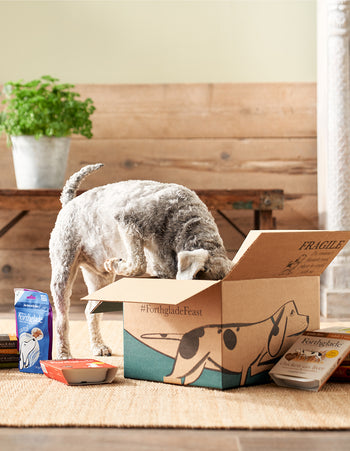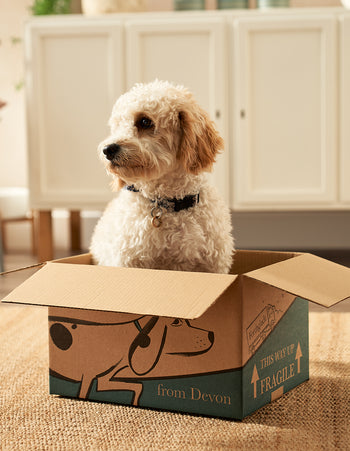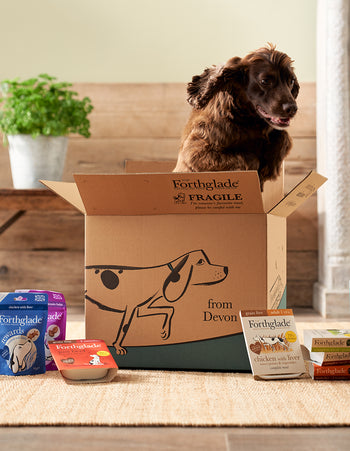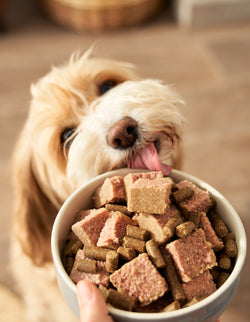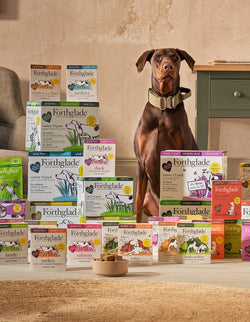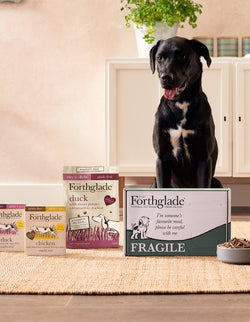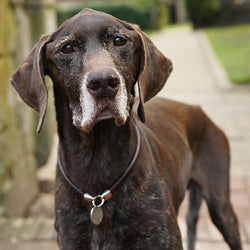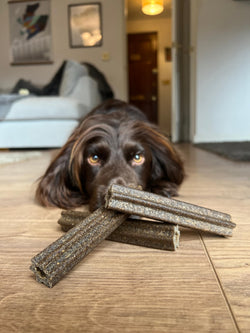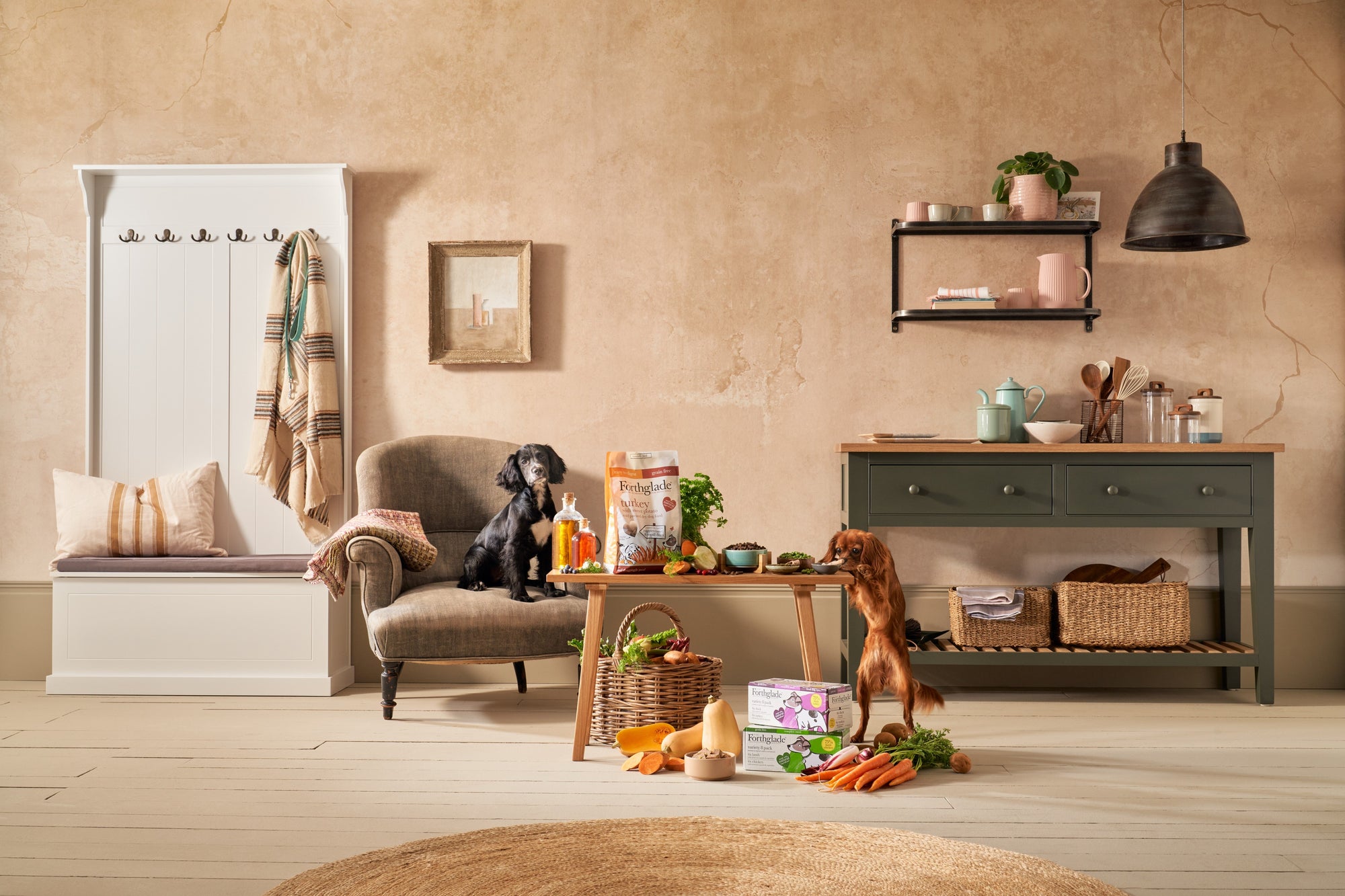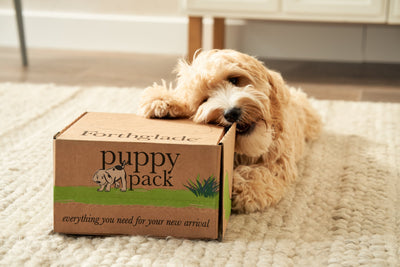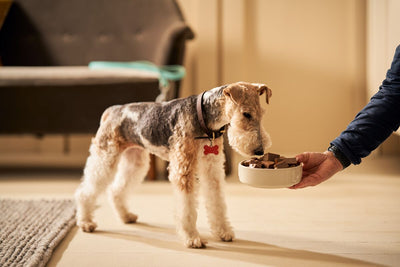It’s easy to take the things that we love the most for granted. The loyal and unconditional love we receive from our canine companions can be one of those small but potent pleasures that falls down the pecking order when work and family life get busy. But what your dog wants and needs more than anything is your support, time and energy. Their unique, non-judgemental brand of love is both a tonic for our mental health as well as a privilege.
The best way to honour your beloved four-legged friend is to nurture your relationship with them. Learn to understand their character and personality and find out what your pup responds positively to through walkies, training, play and cuddle time. If you need some inspiration for having more fun and creating an even deeper connection with your dog, here are some tips and tricks for building a more meaningful relationship.
Spend Time Together

The best way to build your relationship with your furry friend is to spend time with them. A relationship is about being with one another and sharing experiences, so spending time together will strengthen your bond, whether you’re at home or exploring the great outdoors.
Research shows that 93% of dog owners wish they could walk their dog more often, so grab that lead and go! Time spent with your dog during walks is invaluable, helping to strengthen your bond and deepen the emotional connection. Walking your dog also makes you feel happier – win-win!
Sometimes getting out for a walk simply isn't possible, but indoor play can be just as good. Certified Animal Behaviourist, Caroline Wilkinson, says a huge benefit of connecting with our dogs in an indoor environment is that you can really focus on each other, without the distraction of the outside world.
Be playful

Playing games and having fun together strengthens your bond. And just like we like to watch TV, listen to music, read books, visit museums and exercise, dogs like variety, too. Here are some of our favourite games to keep your pup energised at home or outside, and help to build your relationship. Join Facebook group Canine Enrichment for more ideas.
Play Hide And Seek
Hide and seek is not just a children’s favourite – dogs adore it too! If you have kids, kill two birds with one stone and have your children hide and the dog find them. If you don’t have another human to play with, you’ll need to rely on your dog's ‘sit’ or ‘stay’ command. Have your dog stay where he is while you hide. Once you’re out of sight, call out your release word and wait for them to find you.
You could also hide some tasty, scented treats for your dog to seek out – we like these rewards training multi-functional soft bites with chicken & liver. This is a great way to rehearse that key ‘sit’ or ‘stay’ command. Don’t forget to reward your dog with lots of positive reinforcement to congratulate them on completing their challenge.
Sniff Out The Fun
If you’ve played hide and seek with your dog, you’ll know what an incredible tool their nose is. Not only is it incredibly sensitive – dogs have 300 million olfactory receptors in their noses, compared to only about 6 million in ours – but having a good old sniff raises their happy hormones. Try a game of Find It. Perhaps start with an easy place, until your dog gets the hang of things, and gradually increase the difficulty as time goes on.
Wrap up some tasty treats in a towel for your dog to unravel, or have three containers and hide a treat under one, shuffling their positions and then ask your dog to find the treat (these ones have peppermint and parsley to keep your dog’s breath fresh.) Hiding treats in closed cardboard egg cartons is another great example of creating a DIY puzzle game. By using commands like ‘find it’, you can soon teach your dog the game’s name and what they need to do.
Teach Your Dog To Fetch
Use up their seemingly endless energy and bond over a game of Fetch. Simply find a long hallway, stairs or an open space, grab your dog's favorite toy, a tennis ball or a humble stick and have some fun. You could try an erratic bounce toy, which makes the whole experience even more exciting as your dog won't be able to predict in which direction the ball may bounce. Before you start, make sure your dog has a good understanding of the sit command. Once you get your dog to sit, throw the ball and tell them to ‘fetch’.
Start by throwing the ball just a short distance. As soon as your dog picks up the ball, say ‘come’ and encourage your dog to come back to you by speaking in a happy voice, patting your legs and praising them.
Encourage A Tug Of War
Tug of war is physically tiring, mentally stimulating, and just plain fun for your four-legged friend. Despite popular belief, many studies have found that tug of war doesn't cause aggression in dogs and that playing it can help to improve the bond between you and your pup, improve their confidence and even redirect destructive chewing habits.
Your dog must know a 'drop it' or release command so that you can easily stop the game if needed, so you may want to focus on this before you dive in. Only ever pull the chew from side to side, never upwards, as this could cause damage to your dog’s spine. Puppy Leaks has a great article all about the benefits of tug of war.
Create An Obstacle Course
You don’t need fancy kit to build an indoor playground for your pup! Use brooms and laundry baskets to create jumps, make tunnels out of cardboard boxes and hold up a child's hula-hoop for them to leap through. Learning to complete an obstacle course will provide exercise and mental stimulation, improve obedience, allow your dog to show off and give you oodles of opportunity to bond.
Communicate Clearly

Misunderstandings and confusion can harm good relationships, so be clear when you communicate with your dog. This is how you’ll get to know their personality, learning style, likes and dislikes and the body language and facial expressions that indicate stress. When you see the signs that your dog is anxious or scared, you can protect or remove your dog from situations that make them uneasy. This will strengthen the trust between you and your dog, as they know they can rely to keep them safe. In turn, this will enrich your relationship.
Remain Calm, Consistent And Patient
No matter what happens, exude a sense of peace and calm so your dog knows you can keep your cool. Try not to lose your temper, shout or get upset – like children, dogs will find this very stressful. They pay attention to what you do more than to what you say, so be mindful of your behaviour, tone of voice and body language when you communicate with them. You’ll feel closer when there’s greater understanding between the pair of you.
Adapt To Understand Your Dog
Dogs love consistency, with a routine, regular walks and mealtimes. But not every day is the same and, like humans, dogs can be moody. If they don't fancy going out for a walk, it’s fine, don’t go. Maybe they had a bad night’s sleep, maybe they’re feeling under the weather, perhaps they just want to chill out or it could be that it’s raining and they just don’t fancy getting wet!
Pay Attention To Your Dog’s Likes And Dislikes
Knowing what makes your pup’s tail wag – and what doesn’t – is key to building a better relationship. Being aware of their favourite games, foods and where they like to be tickled means you’ll forever be the source of all things good. In the same vein, keep a note of what they’re not so keen on: loud noises, possibly certain breeds of other dogs or being petted on particular parts of their body.
Make Lots Of Time For Cuddles

Stroking your dog can increase the stress-reducing and bonding ‘love hormone’ oxytocin, for both human and dog. The feeling of warmth and fur can lower our own heart rate and blood pressure. While we don’t want to force physical touch onto a dog that doesn’t enjoy it, you can use the three-second rule to see if your dog is happy to snuggle. Stroke your dog on their chest or side (avoiding the head) for three seconds and then stop. If your dog moves away from you, or shakes, don’t continue. If they nuzzle in for more, continue to enjoy the moment.
Put A Little Love Into Their Food
Like us humans, the way to a dog’s heart is also via his tummy (and don’t we know it!). Why not try out a little baking with our DIY carrot, apple and oats dog biscuits. Do strike a balance when treating, however. Avoid over-feeding by allowing for the treats within your dog’s overall daily food intake.
You could even try inviting your furry family member to share a meal with you. Some dogs actually prefer to eat in a social setting, with you near them. The process of consuming food together boosts the bonding hormone, oxytocin. We’re not suggesting you set a place for them at dinner (although why not?!), but you could create a picnic where you can enjoy some of the same starter.
Cut up some dog-safe fruits or veggies for both of you to enjoy to start with. Then, fill up a food toy with some of their favourite Forthglade food, while you get to eat a sandwich or cake without them wanting to share. Too wet to be in your garden? Have an indoor picnic on your living room floor instead!
Teach Them Some New Tricks

Obedience training is a really important part of building the bond between you and your dog, especially in the early days. It's always best to keep up the good work and spend a bit of time every day revisiting commands you’ve trained your dog on before. But make it fun!
Training isn’t all about learning complex behaviours. It also allows our dogs the opportunity to develop social skills that can improve their relationships with the humans they live with, as well as those outside of their family.
EnterTRAINment
You’re both more likely to persevere if you think of training as what Certified Animal Behaviourist Caroline Wilkinson calls ‘enterTRAINment’. Your pup will love showing off their new skills and it also helps increase verbal and non-verbal communication, which is one of the best ways to strengthen your bond.
Teaching our dogs new cued behaviours can help them to learn and grow various skill sets, from basic focus and impulse control to physical strengthening exercises. Plus, a dog that has had a period of mental stimulation in their day – alongside some physical exercise – will more likely be calm and relaxed than a dog that has only had physical activity. It’s a great opportunity to have some fun and boost your bond!
Need more play and training inspiration? We’ve got more advice, tips and tricks on our blog.

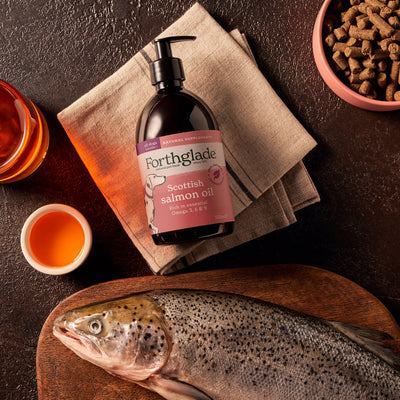


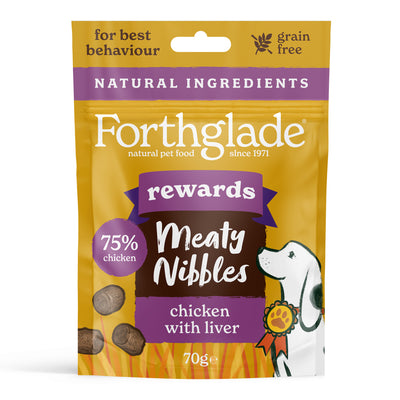







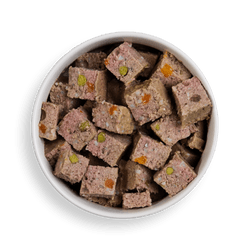

 Over 7,339 5* Reviews
Over 7,339 5* Reviews
 Established since 1971 - Made in Devon!
Established since 1971 - Made in Devon!
